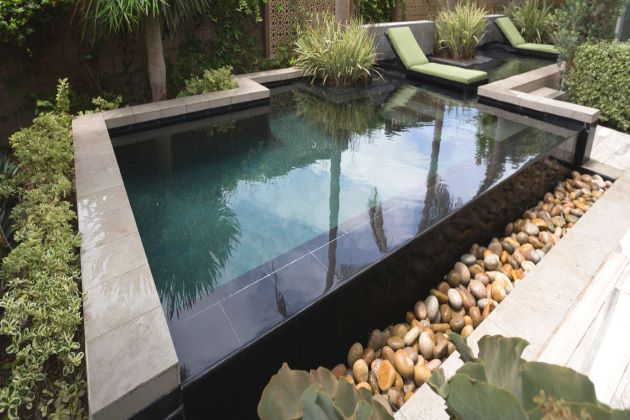Every season there are new ways to add exciting flair to a pool. Fountains, bubblers, lighting, audio, video . . . the list goes on and on. But one feature still towers above the rest in popularity – the waterfall. Waterfalls are one of the most versatile, beneficial features that a builder can add to a pool design. Here are a few of the many reasons to keep loving – and selling – this classic feature.
VERSATILE INSTALLATION OPTIONS
Add architectural appeal. A waterfall can be built into free standing monuments or integrated into a retaining wall. When hidden into a rocky structure, the waterfall becomes a nature-inspired escape. Also, try combining a waterfall with an attached hot tub structure to create a faux spillover effect.
LED lighting accents. With modern LED lighting, creating an accented waterfeature has never been easier. Older lighted waterfalls required fiber optics or external lights. Newer models have serviceable LEDs integrated into the waterfall unit. This creates a seamless, accent lighted waterfall.
Shape, size and flow options. Most waterfalls can be custom cut to perfectly match popular kidney or freeform pool shapes. With sizes available up to eight feet long, a fabulous, curved wall of water can set off any size pool. In addition to “sheer” styles, waterfalls also are available in arched or rain droplet styles, adding even more design choices.
BENEFITS BEYOND VISUAL APPEAL
Ambient waterfall sounds. A waterfall adds a natural background noise to the pool that can become an audible part of the pool design. The white noise can be soothing while drowning out other neighborhood or road sounds. The background noise also creates a great sense of privacy in the pool.
Water cooling effect. If you don’t want the pool to feel like a bathtub, a waterfall can help to keep things a little cooler. In hotter climates, adding on a waterfall is a better long term solution than dropping in ice blocks. And it’s a lot more attractive.
Aerating the water. As the waterfall hits the surface it churns and bubbles. This process helps to aerate the pool, driving oxygen into the water.
Source: Pool & Spa News




